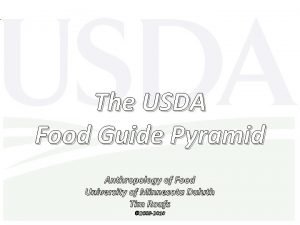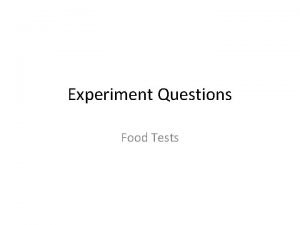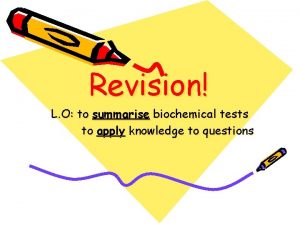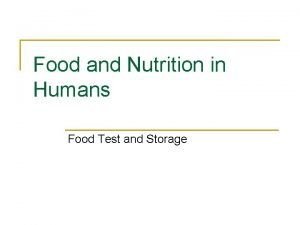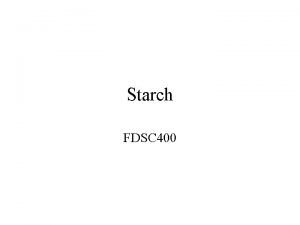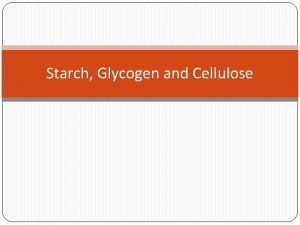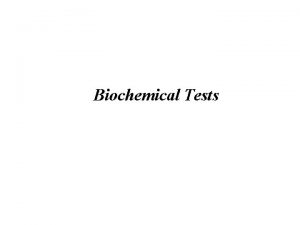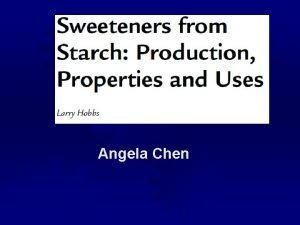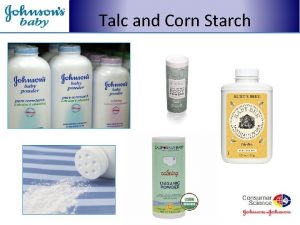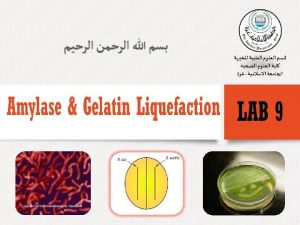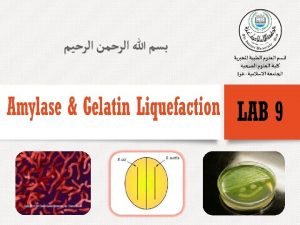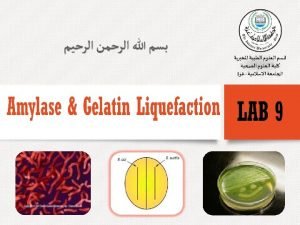Food Groups Tests Testing for starch Method 1









- Slides: 9

Food Groups Tests

Testing for starch Method: 1. Mix small amount of each food sample with distilled water to make a test liquid. 2. To a test tube, add 40 drops of liquid to be tested. 3. If testing more than one liquid, label each test tube with a marker. 4. Add 5 drops of iodine solution to each test tube 5. Note any color change. If starch is present solution will blue/black

Testing for (refined/ simple) sugars Method: 1. Mix small amount of each food sample with distilled water to make a test liquid. 2. To a test tube, add 40 drops of liquid to be tested. 3. If testing more than one liquid, label each test tube with a marker. 4. Add 10 drops of Benedict's solution to each test tube. Carefully heat the test tubes by suspending in a hot water bath at about 40 -50 degrees celsius for five minutes. 5. Note any color change. If sugar is present solution will turn green, yellow, or brickred, depending on sugar concentration.

Testing for protein Method: 1. Mix small amount of each food sample with distilled water to make a test liquid. 2. To a test tube, add 40 drops of liquid to be tested. 3. If testing more than one liquid, label each test tube with a marker. 4. Add 10 drops of Biuret’s solution to each test tube 5. Note any color change. If protein is present solution will turn purple

Testing for lipids 1. Add 10 drops of ethanol to a few drops of the unknown substance in a test tube 2. Shake well 3. Add 10 drops of distilled water to the test tube 4. A positive result will result in a cloudy white suspension forming at the top of the solution.

1) Carbohydrates Testing for starch 1. Use a spotting tile with the food samples. 2. Add 2 drops of iodine solution to each food sample. 3. Which of these foods contain starch? 4. Record results. A colour change from orange to blue-black shows the presence of starch.

Testing for glucose 1. Use 1 spatula of glucose powder in a third of a test tube of water. Dissolve. 2. Put in 10 drops of Benedict’s solution. 3. Heat carefully (in & out of a Bunsen burner flame) 4. Note your result. A colour change from blue, through murky green to yellow/orange/red shows the presence of a simple sugar.

2) Fats & oils (lipids) A white (milk-like) emulsion indicates the presence of fats or oils.

3) Test for Proteins If the mixture turns purple, protein is present. • Use a pestle & mortar to grind up samples of the food (separately). • Put the food sample into a test tube with 10 drops of Biuret solution. Check! HAZARD! Biuret solution is corrosive. Wear eye protection throughout the test. Remove only when all packing away is complete.


